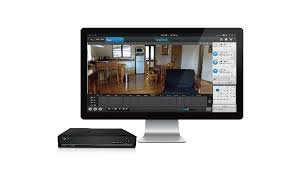WHAT IS A DVR (DIGITAL VIDEO RECORDER)
WHAT IS A DVR (DIGITAL VIDEO RECORDER)
 DVR stands for Digital Video Recorder. It's an electronic device that records and stores video footage captured by security cameras. Unlike NVRs (Network Video Recorders) used in IP camera systems, DVRs deal with analog video signals transmitted over coaxial cables.
DVR stands for Digital Video Recorder. It's an electronic device that records and stores video footage captured by security cameras. Unlike NVRs (Network Video Recorders) used in IP camera systems, DVRs deal with analog video signals transmitted over coaxial cables.Here's a breakdown of DVRs and their key functions:
Recording and Storage:
DVRs receive analog video signals from security cameras.
The video footage is compressed and recorded onto internal hard drives or external storage devices like USB drives or external hard disk drives.
DVRs offer various recording options, including continuous recording, motion-triggered recording, and scheduled recording.
Applications:
DVRs were widely used in traditional CCTV (Closed-Circuit Television) security systems.
They are still used in some existing security systems that haven't been upgraded to IP camera technology.
Limitations Compared to NVRs:
Image Quality: DVRs are limited to standard definition (SD) resolution, resulting in lower quality footage with less detail for identification purposes compared to the high-definition (HD) or even 4K capabilities of NVRs.
Scalability: Adding new cameras to a DVR system is complex and requires additional coaxial cable runs for each camera, making expansion difficult and expensive.
Remote Access: Remote access to live and recorded footage from DVRs is typically limited or requires additional equipment. NVRs offer easier remote access through a network connection.
Limited Features: DVRs generally offer fewer features compared to NVRs. Some models might have basic features like motion detection and scheduling.
Choosing a DVR (if still using an analog system):
Compatibility: Ensure the DVR is compatible with the resolution and format of your existing analog cameras.
Storage Capacity: Consider the recording resolution, frame rate, and desired recording duration to determine the required storage capacity.
Recording Features: Decide on the recording modes (continuous, motion-triggered, scheduled) you need.
Remote Access (if desired): Explore options for enabling remote access if it's important for your needs.
In general, DVR technology is considered maturing, with NVRs offering a more future-proof and feature-rich solution for modern security systems. However, if you have an existing analog camera system and upgrading isn't currently feasible, DVRs can still provide basic video recording functionality.
Type of a DVR
There aren't really distinct sub-types of DVRs (Digital Video Recorders) in the same way there are with NVRs (PoE vs Non-PoE). DVR technology is a more mature standard and the core functionality remains quite similar across different models.
However, here are some ways to categorize DVRs based on their features and capabilities:
Based on Number of Channels:
Channel Capacity: DVRs are typically classified by the number of camera channels they can support simultaneously. Common options include 4-channel, 8-channel, 16-channel, and 32-channel DVRs. Choose one that meets the number of cameras in your system and allows for potential future expansion.
Based on Recording Resolution:
Resolution Options: While all DVRs deal with analog video signals, some models might offer slightly higher resolutions within the standard definition (SD) range (e.g., 960H). This can provide marginally better image quality compared to standard SD resolution.
Based on Recording Features:
Basic Features: Most DVRs offer basic recording features like continuous recording, motion-triggered recording, and scheduled recording.
Advanced Features: Some higher-end models might include additional features like:
Pre-alarm recording: Captures a few seconds of footage before a motion trigger, providing additional context.
Audio recording: Records audio along with video for a more complete picture of events.
Mobile app compatibility: Allows remote access to live and recorded footage through a mobile app.
Other Considerations:
Storage Capacity: The storage capacity of the DVR's internal hard drive is crucial. Factor in recording resolution, frame rate, and desired recording duration to choose an appropriate storage capacity or consider options for adding external storage.
Connectivity: Some DVRs might offer basic networking capabilities for remote access or backup purposes. However, extensive network features are more typical of NVRs.
In Conclusion:
While there aren't distinct sub-types of DVRs, these classifications based on channels, resolution, recording features, and storage can help you choose a DVR that meets your specific needs for recording and managing your analog security camera system. However, it's important to remember that DVR technology is maturing and NVRs offer significant advantages in terms of image quality, scalability, features, and future-proofing for modern security systems.



Comments
Post a Comment